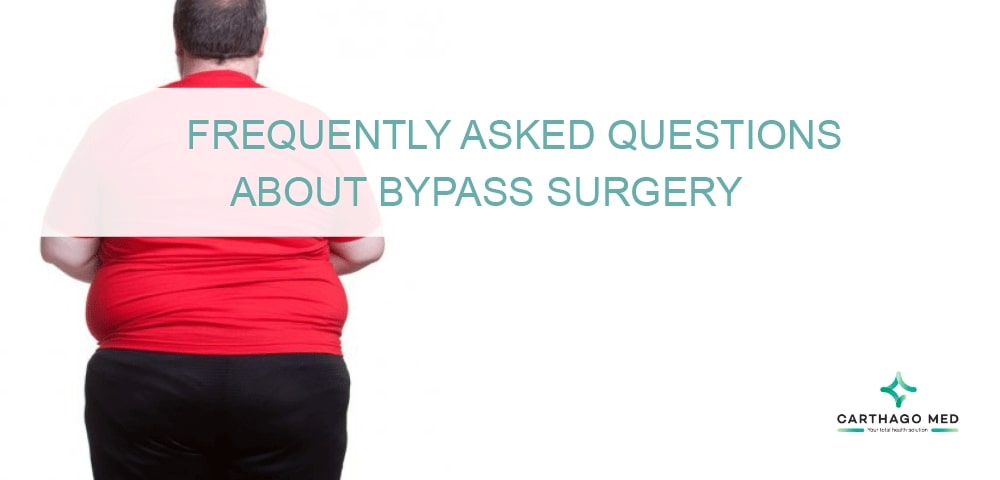
FREQUENTLY ASKED QUESTIONS ABOUT BYPASS SURGERY
What happens to the stomach after gastric bypass surgery?
After undergoing gastric bypass surgery, significant changes occur in the stomach. The procedure reduces the stomach’s capacity substantially, causing patients to feel full much sooner, a condition known as early satiety. Following the surgery, patients are required to strictly follow specific dietary guidelines and practice portion control to avoid overeating. This decrease in food intake plays a crucial role in achieving weight loss goals and maintaining a healthy Body Mass Index (BMI).
Does laparoscopic gastric bypass differ from open gastric bypass?
Laparoscopic gastric bypass is performed through 5 small incisions instead of one large incision. A camera is placed through one of the incisions and surgical instruments through the others. The operation is performed while watching a video screen. The actual operation on the stomach and intestine is the same for both approaches. The incision for open gastric bypass surgery is made about 3/4 of the way from the breastbone to the navel. This is about 10-12 cm in some people and up to 40 cm in others. In contrast, open gastric bypass involves a large incision in the abdomen to access the stomach and intestine. This method is used in specific cases where laparoscopic surgery might not be suitable due to various factors.
Is laparoscopic gastric bypass surgery safe?
Extensive research carried out by seasoned laparoscopic bariatric surgeons has unequivocally confirmed the safety of laparoscopic gastric bypass surgery. This highly intricate procedure, although demanding in its technical aspects, has been rigorously examined through a multitude of studies. The consensus emerging from these studies is clear: the safety of laparoscopic gastric bypass surgery is significantly influenced by the surgeon’s expertise and experience. Studies consistently demonstrate that patients who undergo this procedure under the care of proficient and skilled surgeons are more likely to experience positive outcomes, emphasizing the critical role played by the surgeon’s competence in ensuring the safety and success of the surgery.
What are the advantages of laparoscopic gastric bypass compared to open gastric bypass surgery?
With laparoscopic gastric bypass, the patient has a shorter hospital stay, less post-operative pain, less scars and can return to normal activities quicker. Complications such as wound infections and wound hernias are almost completely eliminated with the laparoscopic technique. The risk of serious complications such as leakage is similar with laparoscopic and open gastric bypass.
Why are not all gastric bypasses performed laparoscopically?
Not all gastric bypass surgeries are performed laparoscopically due to several factors, including the patient’s health condition, the surgeon’s expertise, and the complexity of the case. While laparoscopy generally offers faster recovery and fewer complications, it may not be suitable for every patient. Various factors such as Body Mass Index (BMI), overall health, and previous abdominal surgeries influence the choice between open and laparoscopic approaches. Some patients may require traditional open surgery due to obesity-related complications, making the procedure safer and more effective. Your surgeon will evaluate your specific situation to determine the most suitable approach.
Is the gastric bypass operation reversible?
while it is true that gastric bypass can be reversed, this undertaking demands a procedure of comparable or, in some cases, heightened complexity and risk when juxtaposed with the initial surgery. The reversal process involves a meticulous approach, often requiring adept surgical skills to delicately restore the gastrointestinal anatomy to its previous state. Medical professionals navigate through a labyrinth of challenges, carefully untangling the alterations made during the initial procedure. However, it is paramount to emphasize that the decision to reverse gastric bypass is multifaceted, encompassing not only medical intricacies but also the patient’s overall health, lifestyle factors, and the potential benefits weighed against the risks involved. Thus, the process stands as a testament to the advancements in medical science, showcasing the remarkable ability to navigate the complexities of the human body even in the face of intricate surgical interventions.
Do I have to take nutritional supplements after a gastric bypass?
Nutritional deficiencies after gastric bypass surgery are more common than after gastric banding or sleeve gastrectomy. In particular, vitamins A, D, E, calcium, iron, vitamin B12 and folic acid may be deficient. It is important to maintain these multivitamin supplements as prescribed at the clinic. This additional intake is prescribed to prevent nutritional deficiencies.
How many follow-up visits after gastric bypass surgery?
A follow-up is essential for the success of any bariatric procedure. The gastric bypass patient should have a follow-up 6 weeks after the operation and 3 months afterwards. Thereafter, the patient should be reviewed at least once a year. Blood tests to assess your nutritional status will be an integral part of your follow-up.
Is physical activity limited after gastric bypass surgery?
Laparoscopic gastric bypass surgery does not impose significant limitations on physical activity; in fact, it opens the door to a new chapter of enhanced well-being. In a few weeks after the procedure , individuals are encouraged to engage in a wide array of physical activities, including aerobic exercises, endurance training, and various sports, all of which can be pursued safely and effectively. This surgery serves as a catalyst for a more active lifestyle, empowering patients to embrace the joy of movement and reap the benefits of regular exercise. Moreover, the surgery often instills a newfound motivation, propelling individuals toward healthier choices and a more robust fitness routine. By eliminating the barriers that excess weight once posed, gastric bypass surgery paves the way for individuals to explore diverse physical activities, fostering not only physical strength but also mental resilience and a profound sense of accomplishment. As patients progress through their recovery journey, they discover an enriched quality of life, marked by vitality, confidence, and a passion for staying active.
What weight loss results can I expect from gastric bypass surgery?
Weight loss is achieved through an early feeling of fullness created by the small gastric pouch. Patients become intolerant to sweets due to the rapid intake of sugar in the small intestine, which leads to unpleasant symptoms called “dumping”. Sweets and “fatty” foods should therefore be avoided. The suppression of appetite by gastric bypass is even more important, because the rapid entry of food into the small intestine creates a hormonal effect that induces fullness and satiety. This hormonal effect is also believed to be responsible for the 75% recovery rate from type 2 diabetes.
How much weight can I lose with gastric bypass surgery?
Gastric bypass surgery offers a remarkable transformation, leading to substantial and enduring weight loss. Typically, within the first year following the procedure, individuals shed an impressive 60 to 70% of their excess weight. This means a profound positive impact on overall health and well-being. What makes this journey even more promising is the fact that, even a decade after the surgery, approximately half of the weight lost is successfully maintained.
Will I need plastic surgery to remove the excess skin?
This is not always necessary, as the skin is often elastic, and the excess skin is not visible. In more specific cases, about 30% of cases, the patient will need further plastic surgery to remove the imperfections caused by the weight loss. Cosmetic surgery is generally not recommended until the weight loss has stabilised, which is usually 2-3 years after the operation.
Will I have a lot of pain after a gastric bypass?
Post-operative pain is very low thanks to laparoscopic surgery. The surgeons strive to make you recover quickly by limiting complications and reducing the hospital stay, which is usually no more than 3-4 days. There are various bandages available to help control any post-operative pain you may experience.
How long is the recovery period after gastric bypass surgery?
Following the procedure, patients typically undergo a hospital stay ranging from 3 to 4 nights, allowing medical professionals to closely monitor their progress and ensure a smooth transition to post-surgery life. In the immediate aftermath, it’s common for individuals to require about a week before they can resume their regular work activities. However, for those engaged in physically demanding occupations, it is advisable to extend the recovery period to approximately 2 weeks.









